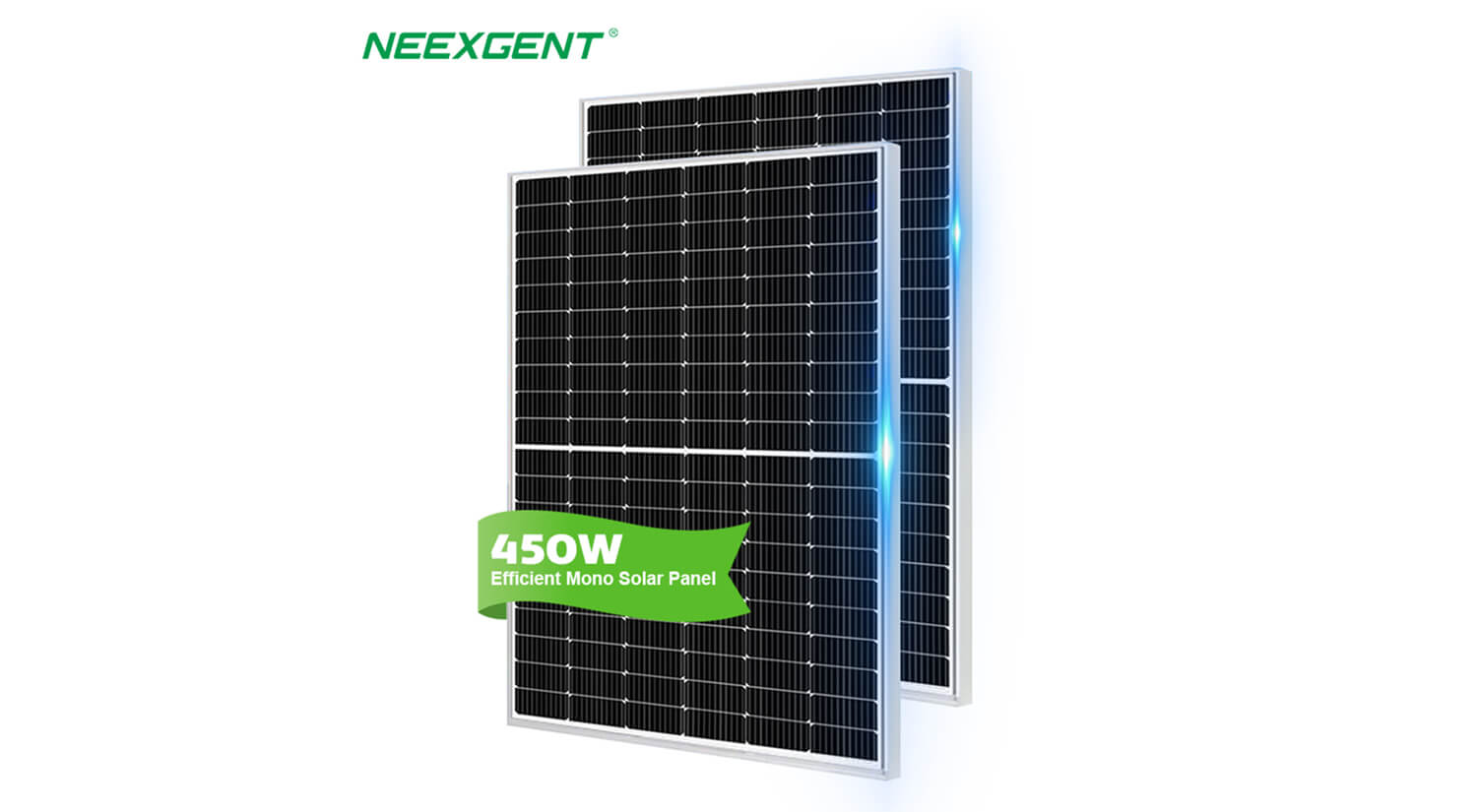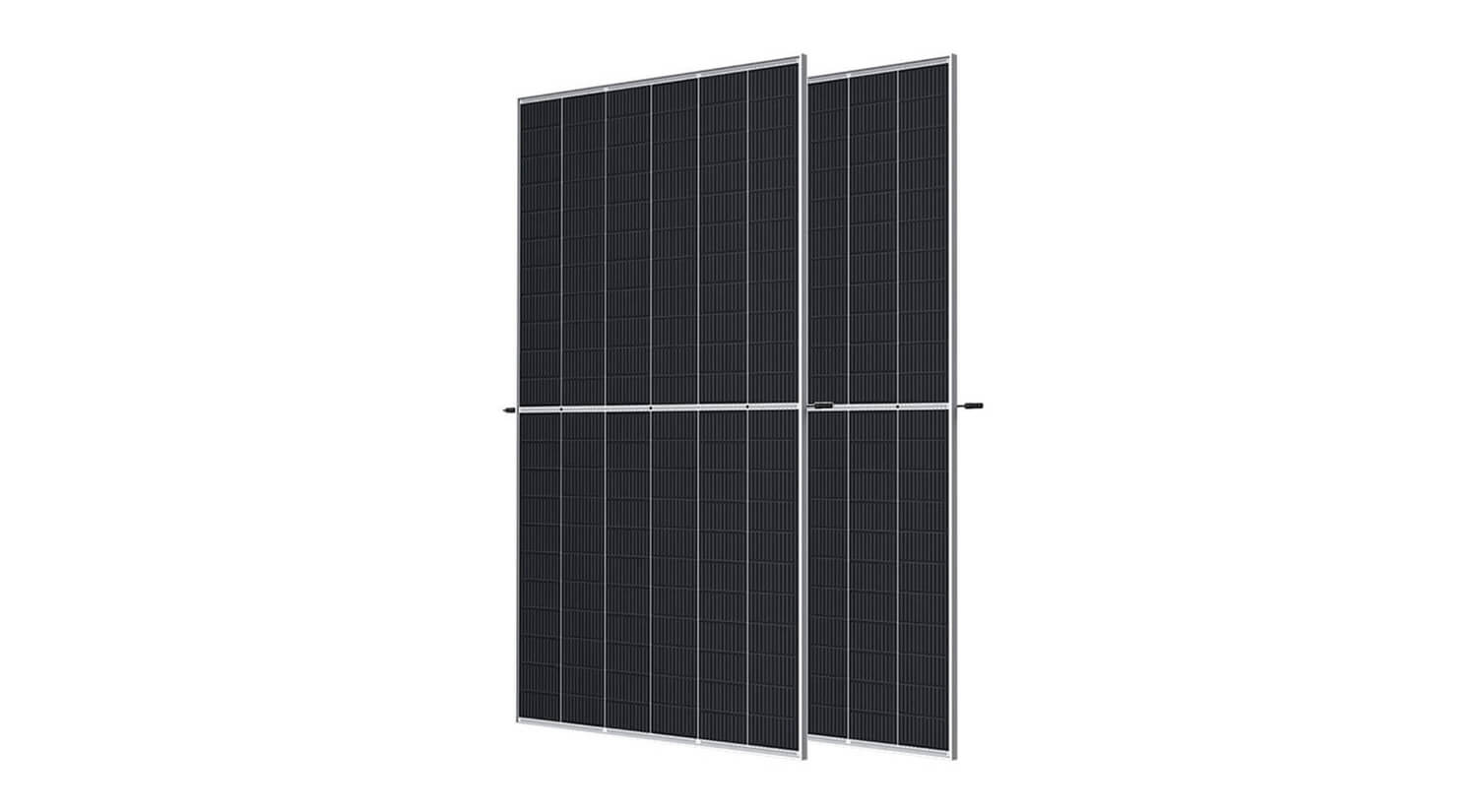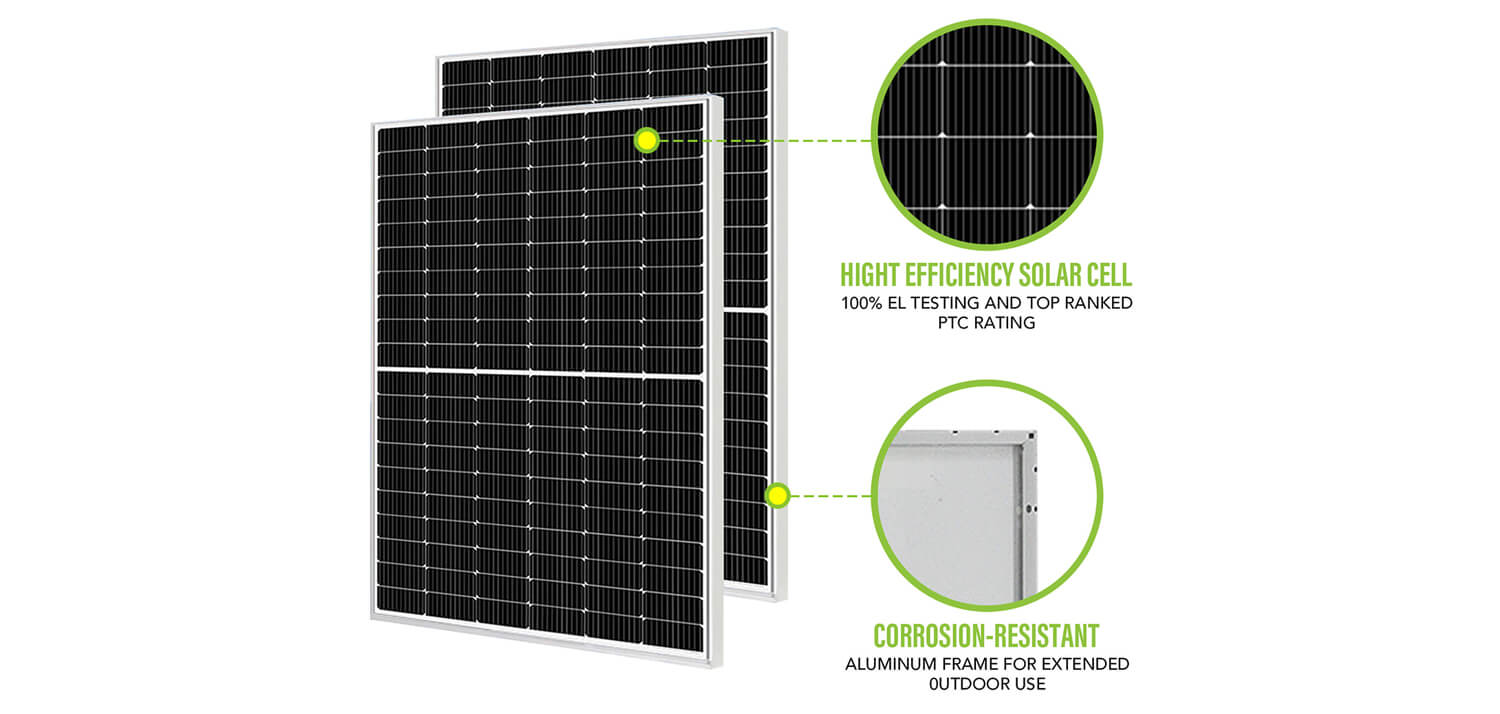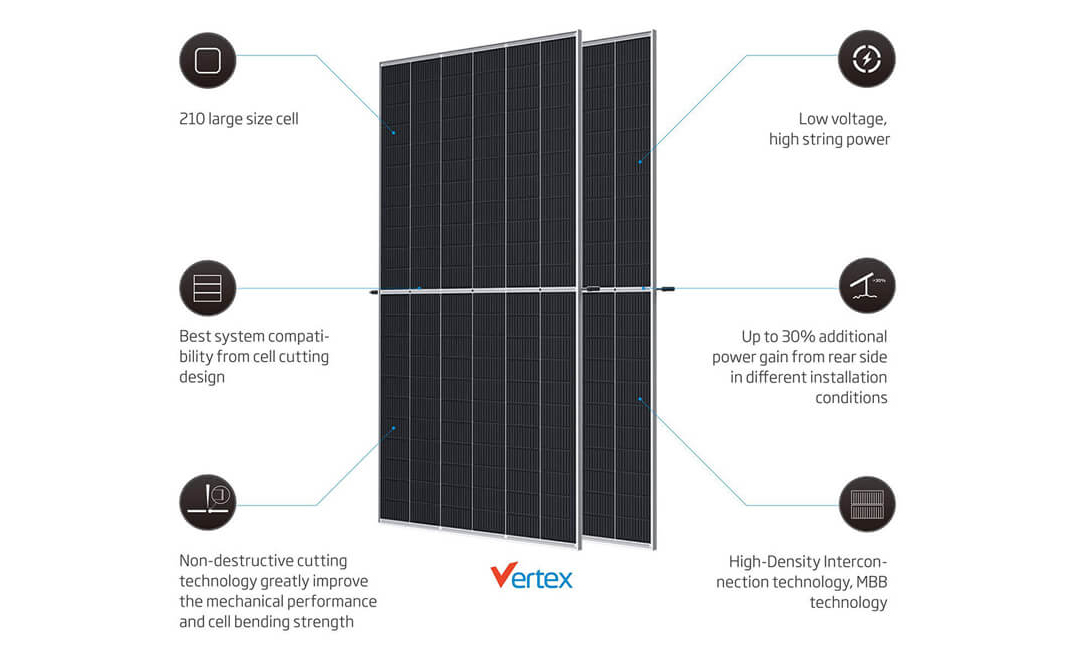
Single-sided solar panels
The design and construction of solar panels are crucial factors that determine their performance and efficiency. Single-sided solar panels are designed with a single layer of photovoltaic cells, which convert sunlight into electricity. These cells are typically made from crystalline silicon, which is the most commonly used material in solar panels. Single-sided solar panels are usually framed with an aluminum or steel frame and covered with a layer of tempered glass to protect the cells from the elements.
Double-sided solar panels, on the other hand, are designed with photovoltaic cells on both sides of the panel. This allows them to capture sunlight from both sides of the panel, increasing their efficiency and energy output. The cells on the backside of the panel are connected by a reflective layer, which reflects the sunlight back onto the cells, boosting their performance. The backside of the panel is usually covered with a layer of white or reflective material to enhance the reflection of sunlight.
The construction of double-sided solar panels is more complex than that of single-sided solar panels, as they require additional materials and layers. The reflective layer on the backside of the panel is made from a highly reflective material, such as aluminum, silver, or copper, and is designed to maximize the reflection of sunlight onto the cells. The backsheet of double-sided solar panels is also made from a highly reflective material, such as white polyester, to enhance the reflection of sunlight. Additionally, double-sided solar panels require a more robust frame to support the additional weight and provide sufficient airflow to the cells.

Double-sided solar panels
Energy efficiency is a critical factor to consider when choosing between double-sided and single-sided solar panels. Double-sided solar panels are generally more efficient than single-sided solar panels, as they are designed to capture sunlight from both sides of the panel, increasing the amount of energy that can be produced. According to some studies, double-sided solar panels can produce up to 35% more energy compared to single-sided solar panels under certain conditions.
One of the key factors that influence the energy efficiency of solar panels is the amount of sunlight that they can capture. Double-sided solar panels are designed to capture sunlight from both sides of the panel, which increases the amount of energy that can be produced. This is particularly beneficial in areas with high levels of diffuse light, such as cloudy or overcast days, where single-sided solar panels may not be as efficient.
Another factor that can affect the energy efficiency of solar panels is the temperature of the cells. When solar cells get hot, their efficiency decreases, which can reduce the amount of energy that is produced. Double-sided solar panels are designed to dissipate heat more effectively than single-sided solar panels, which can help to maintain their efficiency even in high-temperature environments.

Single-sided solar panel Detail
The cost of solar panels is a crucial consideration when choosing between double-sided and single-sided solar panels. Double-sided solar panels are generally more expensive than single-sided solar panels due to their more complex design and additional materials. The reflective layer and backsheet on the backside of double-sided solar panels require additional manufacturing processes, which can drive up the cost of production. However, the increased energy output and efficiency of double-sided solar panels can result in lower overall costs over the lifetime of the system, as more energy can be produced with fewer panels.
The installation requirements for double-sided and single-sided solar panels can also vary. Double-sided solar panels are typically thicker and heavier than single-sided solar panels, which can make them more challenging to install. The increased weight and thickness of double-sided solar panels can also require additional structural support, which can add to the installation costs. Additionally, the reflective backside of double-sided solar panels requires additional spacing between the panels to prevent shading and maximize their efficiency, which can also affect the installation costs.
Single-sided solar panels, on the other hand, are generally thinner and lighter than double-sided solar panels, making them easier to install. They also require less structural support, which can help to reduce the installation costs. However, a larger number of single-sided solar panels may be required to produce the same amount of energy as a smaller number of double-sided solar panels, which can increase the overall installation costs.

Double-sided solar panel Detail
- Maintenance and durability
Maintenance and durability are important factors to consider when choosing between double-sided and single-sided solar panels. Both types of solar panels require regular maintenance to ensure they operate efficiently and produce maximum energy output.
Double-sided solar panels may require more maintenance than single-sided solar panels due to their more complex design. The backside of double-sided solar panels contains a reflective layer and backsheet that requires cleaning to maintain their efficiency. The reflective layer can become dirty over time, reducing its ability to reflect sunlight and increasing the likelihood of shading on the front side of the panel. To prevent this, regular cleaning is necessary to remove dirt and debris from both sides of the panel. Additionally, the reflective layer and backsheet may be more prone to degradation and wear over time, which can impact the panel's performance and lifespan.
Single-sided solar panels, on the other hand, are typically easier to maintain due to their simpler design. They do not require cleaning of the backside and are less prone to degradation and wear over time. However, single-sided solar panels may be more susceptible to shading from nearby trees or buildings, which can reduce their energy output.
Durability is also an important consideration when choosing between double-sided and single-sided solar panels. Both types of solar panels are designed to withstand harsh weather conditions and have a long lifespan. However, double-sided solar panels may be more durable than single-sided solar panels due to their thicker and more robust design. The additional layer on the backside of double-sided solar panels can provide additional protection against environmental factors such as wind and hail, increasing their lifespan and durability.
Maintenance and durability are important factors to consider when choosing between double-sided and single-sided solar panels. Double-sided solar panels may require more maintenance than single-sided solar panels due to their more complex design, but they may also be more durable due to their thicker and more robust construction. Single-sided solar panels are typically easier to maintain and less prone to degradation, but they may be more susceptible to shading. The choice between double-sided and single-sided solar panels will ultimately depend on the specific needs and requirements of the project, as well as the available budget and resources.









